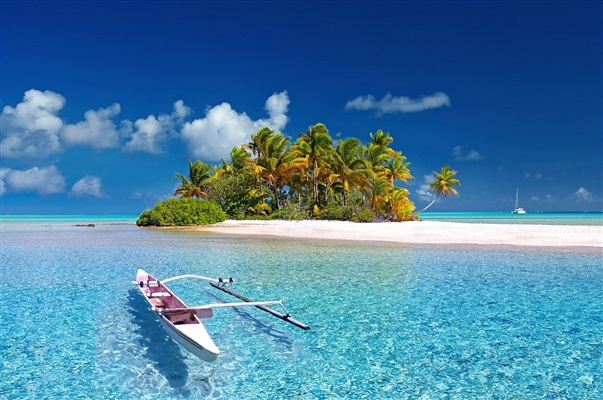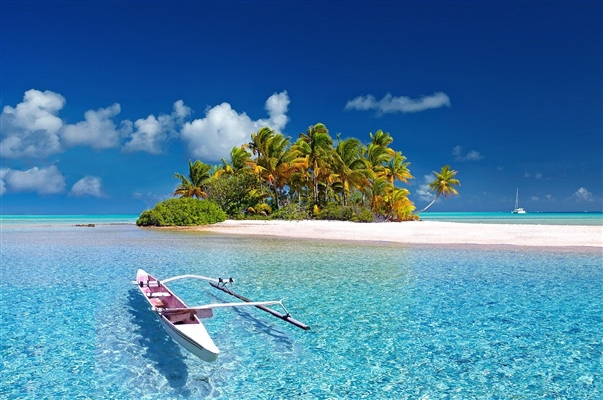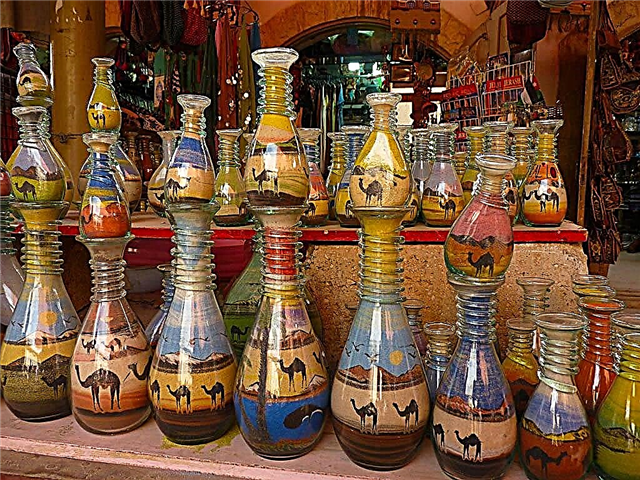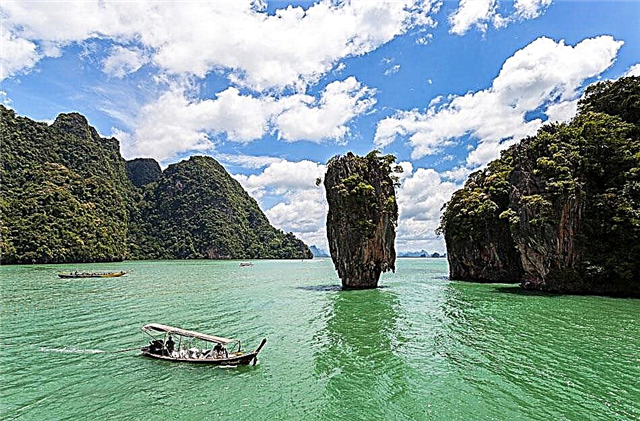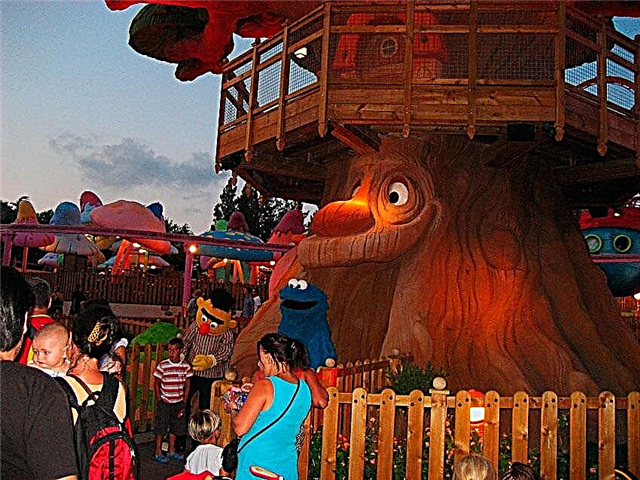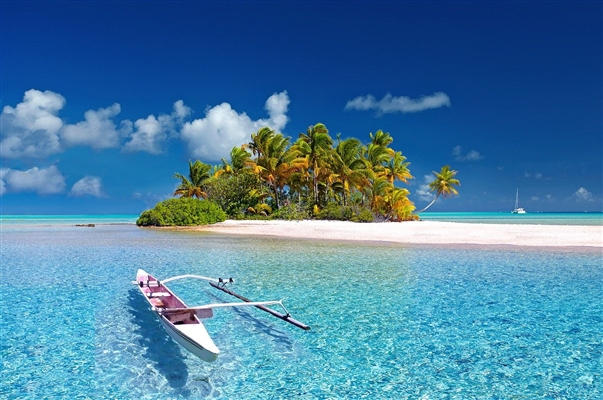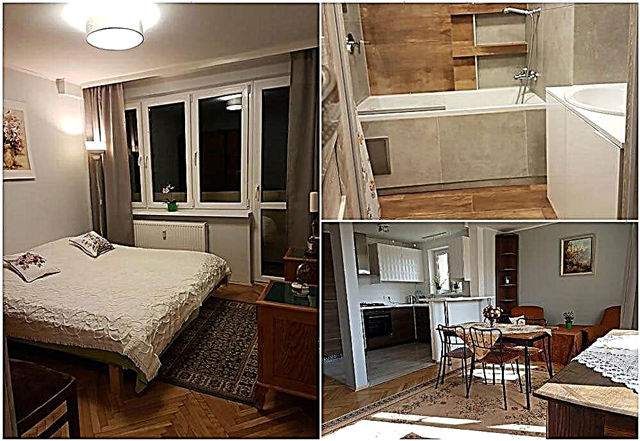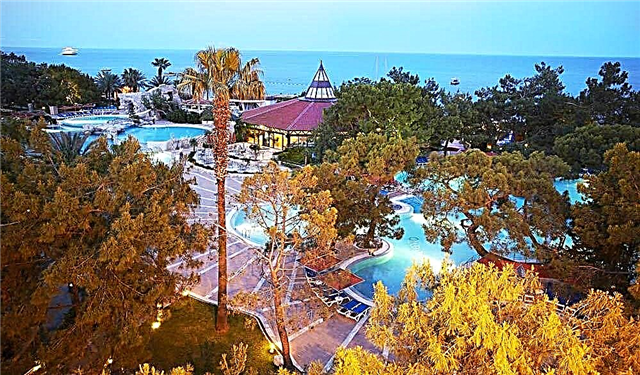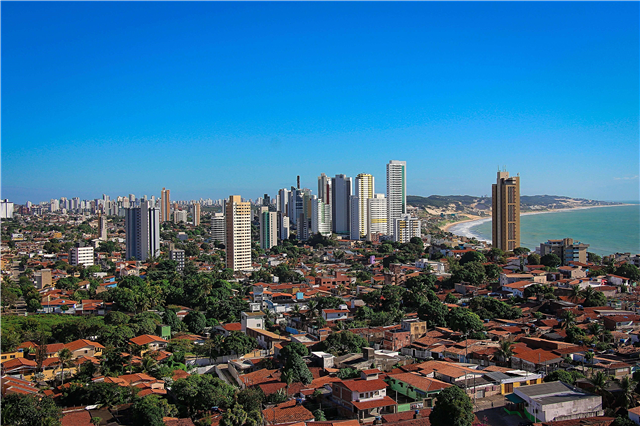Brazil is populated unevenly, but the population density is high practically throughout the entire territory of the state. There are several large metropolitan areas, and the millionaire cities are 18. São Paulo is not only the most populous in Brazil, but in the entire Southern Hemisphere. To relieve a little of the metropolitan areas in 1960, a new capital, Brasilia, was founded.
Although there was a plan for its construction and development, the poverty of the population corrected it: satellite settlements appeared in the suburbs. This phenomenon is typical for other large cities as well. Even the smallest cities on the list have crossed the mark of 500 thousand inhabitants. In terms of tourism, Brazil "trades" color, football, carnivals and beaches. The most striking example is Rio de Janeiro.
The largest cities in Brazil
List of the largest cities in terms of population in the country.
Sao Paulo
The most populous city in the Southern Hemisphere was founded by the Jesuits. São Paulo has an active nightlife: the number of bars and clubs has exceeded 15 thousand. The architecture is mixed: there are old churches and modern skyscrapers nearby. The Paulista Museum collection tells about the proclamation of Brazilian independence, and the Latin American Memorial - about the traditions and culture of all countries in the region.
Population - 12 106 920 people (2017).

Rio de Janeiro
The city on the shores of Guanabara Bay is a major port, financial and cultural center. The symbol of Rio de Janeiro, a giant statue of Christ the Tempter, is installed on the top of Mount Corcovado. Copacabana Beach is 4 kilometers long and is one of the most recognizable in the world. The Maracanã Stadium has more than once hosted iconic matches and events, being the largest in Brazil. Rio's carnivals are global events.
Population - 6 520 266 people (2017).

Salvador
From the middle of the 16th century to the middle of the 18th century, the city served as the capital of Brazil. El Salvador is divided into two levels. The top includes government buildings, many museums and architectural beauties. Lower is a shopping center. The parts are connected with each other by various transport, including the unique one - Lacerda lift. Carnivals are held in Salvador, and the procession's actions are much less choreographed than in Rio.
Population - 2 921 087 people (2015).

Brasilia
The capital of Brazil was founded in 1960. It was built from scratch according to a special plan to move government offices here and relieve other large cities in the country. However, Brasilia soon faced the "pain of growing": satellite cities formed near its outskirts, more populated than Brasilia itself. The Cathedral, the Islamic Center, the Congress building - there are a lot of architectural beauties here.
Population - 2 789 761 people (2013).

Fortaleza
The translation of the name is "fortress". It is one of the oldest cities in Brazil. Sightseeing: Murisipe Lighthouse, Irasema Statue, Fort of the Assumption of Our Lady, Jose de Alencar Theater, English Bridge, Palacio de Luz. On the city beaches there are many leisure options, there are water parks, sports and playgrounds. The period of festivals and carnivals begins in February, which lasts until the beginning of Lent.
Population - 2 591 188 people (2015).

Belo Horizonte
The translation of the name is "beautiful horizon". It was built according to a specially developed plan. The Liberty Palace and the Pampulha Art Museum are examples of the futuristic buildings of the city center. Preserved architectural objects from the times of the "gold rush" and the beginning of the XIX century. 60 kilometers from Belo Horizonte, there is a park-museum of modern art, Inotim. It is simultaneously an exhibition area and a botanical garden.
Population - 2 501 576 people (2018).

Curitiba
One of the most environmentally friendly cities in the world. The standard of living here is higher than the national average. Curitiba has a “street of flowers”, the Gothic-style cathedral of Nossa Senhora da Luz, a zoo, and the Arami opera house. The TV tower, which is almost 110 meters high, offers a panoramic view. There are 4 memorials "scattered" in the districts according to the number of peoples who originally settled in these lands.
Population - 1 879 355 people (2015).

Manaus
Located in the middle reaches of the Amazon. It is surrounded by jungle on three sides. The coastline is lined with Aboriginal huts, and the center of Manaus looks more like a modern European city. Many residents are busy collecting Brazil nuts and rubber mining. Ecotourism has become more and more popular in this area over the years. Guides are ready to arrange walking and car walks in the surroundings of any complexity.
Population - 2 182 763 people (2019).

Recife
"Brazilian Venice" is distinguished by an abundance of canals and bridges thrown over them. Some of the districts are located on islands, to which bridges also lead. Its coastal location has also made the city a trade center: the export of sugar, cotton, leather goods and paper is the foundation of Recife's financial well-being. The Ricardo Brennand Institute was named the Continent's Best Museum in 2015. Buildings from the colonial period have survived.
Population - 1,625,580 people (2016).

Porto Alegre
The area around is hilly, and urban areas are sandwiched between sandy coastlines and mountain peaks. The Santana Upland, with its forests and clean lakes, is part of the protected area. Saint Peter's Hill is distinguished by a variety of ecosystems. And from the Ossu observation deck, a breathtaking view of Porto Alegre opens up. Many beauties are concentrated around Praça de Matriz, including the cathedral.
Population - 1 484 941 people (2017).

Belém
State capital of Pará. The main city event is the procession in honor of the Blessed Virgin Mary. Approximately one million Catholics take part in this procession on the second Sunday of October every year. UNESCO has included the holiday in the list of intangible heritage. A few kilometers from Belem, the borders of the Utinga Natural Park begin. A full-fledged beach resort is organized on the nearby island of Moskviro.
Population - 1 439 561 people (2015).

Guarulhos
It is part of the Sao Paulo metropolitan area. Founded in the 16th century. Urban areas stretch along the coast of the Tiete River. From past eras, ruins remain in the vicinity, as well as well-preserved religious sites inside the city itself. The local history and local history museum tells the history of the region. There are collections here, both dedicated to indigenous people and migrants.
Population - 1 365 899 people (2018).

Goiania
The city is known for the following fact: here, among all the settlements in Brazil, the largest number of shrubs and trees per inhabitant. Avenues of fruit trees lead directly to the skyscrapers. The area of Campinas is built up with Art Deco buildings that have become a national heritage. Popular museums: Zoroastro Artiaga, anthropology, contemporary art. Rock festivals are held in Goiânia.
Population - 1,430,697 people (2015).

Campinas
The Brazilian "Silicon Valley" received an impetus for development in the middle of the last century. Campinas has two shopping malls - the largest in the country. Bosque dos Zhekchibas Park includes a part of the rainforest. The cathedral was built in the 19th century. The interiors are made of jacaranda and decorated with carvings. There are two airports near the city, including the international Viracopos.
Population - 1 164 098 people (2015).

San Luis
The capital of the state of Maranhao is located on the peninsula. It is connected to the continent by a large bridge. Hundreds of monuments from the colonial period have survived in San Luis. The architectural complex of the 17th century with the Church of De Se and the Palace of Lions is especially beautiful. The collection of the Kafua das Mersis museum tells the history of the city. Many kilometers of sandy beaches stretch along the entire coast.
Population - 1,073,893 people (2015).

Maceio
Port on the shores of the Atlantic Ocean. One of the centers of agriculture in Brazil. Plage de Jatiuca is the site of the surfer competition.Due to the frequent large waves on the local beaches, it is good to train. The resort infrastructure is also developed here. The Sports Museum is mostly about football. Folk art and souvenirs are sold on three large markets.
Population - 1,012,382 people (2018).

Sao Gonçalo
Part of the metropolitan area of Rio de Janeiro. Settlements in these territories have existed since antiquity, but in its current form the city began to form only in 1890. The São Gonçalo Botanical Garden also serves as a center for crop production. In 1970, an open-air museum was founded, associated with the events of the Second World War. Before the annual big carnival, the streets of the city's hotels are crowded.
Population - 1,010,212 people (2012).

Natal
Located on the coast, and the local beaches are considered one of the most comfortable in Brazil. The historical part of Natal has preserved traces of the colonial era, for example, the Fortress of the Three Kings. Diving festivals are held nearby in Maracagjau. For lovers of outdoor activities, there are also opportunities to go surfing, arrange a safari in rented jeeps, and go out to sea for fishing.
Population - 877 662 people (2016).

Duque di Caxias
Refers to the metropolitan area of Rio de Janeiro. In many ways, the city, founded in the middle of the last century, has developed thanks to oil refineries. As elsewhere in the country, football is loved in Duque di Caxias. The city's distinction is the rapid advancement of its team, which appeared only in 2005, in divisions. The county is proud of the Caxias Municipal Theater. Its auditorium is designed for 440 seats.
Population - 842 686 people (2007).

Sao Bernardo do Campo
It is part of the Sao Paulo metropolitan area. The city appeared on the Atlantic coast in 1553. Climate features allow you to relax on local beaches all year round. In this regard, a bias is made towards the development of the tourism industry. Brazilians themselves often prefer this resort to others. The hotels are different in price categories, but few are up to the European service.
Population - 833,240 people (2018).

Nova Iguazu
Part of the metropolitan area of Rio de Janeiro. Its location in Guanabara Bay has helped the city develop into a major shopping center. The terrain is mixed: the plains turn into hilly territories, there are also larger hills, where climbers often train. The suburbs are occupied by coffee plantations. A modern skate park is open, there are several large museums.
Population - 797 435 people (2016).

Terezina
The state capital of Piaui is located between the Poti and Panaiba rivers. The city is one of the "green". It is surrounded by savannas and forests. There is a lot of rain and thunderstorms throughout the year, and the area is considered one of the hottest in the country. The Crafts Center has 30 shops selling handmade goods. The Church of Our Lady of Perpetual Help is the oldest religious site in Terezina.
Population - 847 430 people (2016).

Juan Pesoa
The capital of the state of Paraiba is located on the northeastern coast of Brazil. The city holds the second place on Earth in terms of the number of parks. They occupy about 700 hectares. The Basilica of the Nose Senhora das Neves is included in the list of the most ancient temples in the country. The Juan Pesoa Convention Center building resembles a sail. 14 kilometers from Juan Pesoa is the Cabo Branco lighthouse. It is customary to watch the dawn from it.
Population - 801 718 people (2016).

Campo Grande
Located near the border with Paraguay. The territory of the city includes the eco-park dos Poderes. The Palacio de Cultura exhibits works by local artists. Numerous restaurants offer Brazilian cuisine. Some of them are even included in sightseeing tours of the historical part of Campo Grande. Most of the residents are migrants. There are people from Japan and Arabs, as well as from neighboring countries.
Population - 755 107 people (2008).

Ozasku
Part of the Sao Paulo metropolitan area. The city was founded in 1962 and is still heavily dependent on the "older brother". Chico Mendes Park is the best place for recreation: wild plants are preserved, but there are many artificial plantations, there is a reservoir, walking paths. An unusual attraction is located near the railway station - a staircase, the steps of which are similar to piano keys.
Population - 697 886 people (2017).

Sao Jose dos Campos
It was founded as a village and quickly expanded to its current size, changing its status. On the day of the city - July 27 - guests from all over the area come. The holiday includes a parade, food festivals, and a concert program. São Jose dos Campos is home to the headquarters of Embraer, a leader in the global aircraft industry. There is an ecological reserve Augusto Rushi in the district.
Population - 688 597 people (2015).

Santo André
It is part of the Sao Paulo metropolitan area. Founded in the middle of the 16th century. The first name is San Bernardo. The automotive and metallurgical industries have helped the city develop to its current state. Despite the presence of enterprises that pollute the environment, approximately 60% of the territory of Santo André is located in a protected area. Sightseeing: Railway Museum, City Theater, Bruno Jose Daniel Stadium.
Population - 667 891 people (2007).

Jabuatan dos Guararapis
Located on the Atlantic coast. Jabuatan dos Guararapis lies on a plateau with terraces and slopes on its outskirts. City Day is celebrated on August 3. Preparation for the holiday begins one month in advance, and among the invitees there are artists from other regions and neighboring countries. The beaches are long and clean, the infrastructure is developed. Nightlife is in full swing during the season. A large water park has been built.
Population - 665 387 people (2010).

Sorokaba
One of the metropolitan areas of Sao Paulo. The metallurgical and textile industries generate more income for the city than other activities. City parks are the remnants of wild forests, but refined and supplemented with ornamental plants. Sorokaba Zoo is one of the largest in South America. There are horse farms and clubs on the outskirts, and there are several resorts.
Population - 644 919 people (2015).

Contazen
The city was founded on these lands in order to extract precious metals. Human activities have led to serious pollution of nearby water bodies. In Contajen, buildings from the colonial period have survived, especially many houses and villas that belonged to Portuguese settlers in the past. The city hosts an art fair on weekends.
Population - 648 766 people (2015).



